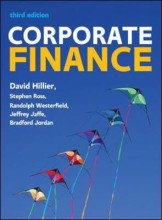Summary: Ch.2 Foundations Of Individual Behaviour
- This + 400k other summaries
- A unique study and practice tool
- Never study anything twice again
- Get the grades you hope for
- 100% sure, 100% understanding
Read the summary and the most important questions on Ch.2 Foundations of individual behaviour
-
1 Ch.2 Foundations of individual behaviour
This is a preview. There are 14 more flashcards available for chapter 1
Show more cards here -
What are the two sets of factors in abilities?
1. Intellectual ability; the capacity to do mental activities
2. Physical ability; the capacity to do tasks that demand stamina, dexterity and strength by using your body -
What are the 9 basic physical abilities?
1. Dynamic strength
2. Trunk strength
3. Static strength
4. Explosive strength
5. Extent flexibility
6. Dynamic flexibility
7. Body coordination
8. Balance
9. Stamina -
General Mental Ability (GMA)
Intelectual dimensions are positively related. Higher intelligence means having a more interesting job. -
Relationship between age and job performance
Job performance declines when ageing, even though you have more experience and commitment, you lack in flexibility and technological knowledge. -
What is the only gender difference in job performance?
Women are more absent, because of their home and family responsibilities. -
The effect of tenure/seniority
Tenure is positively related to productivity (more experience) but negativity to absenteeism. Less turnover, but more job satisfaction. -
Religion affects the workplace in...
terms of clothing, working hours, contact with foods. Religious discrimination can lead to health problems, absenteeism and turnover. -
4 key processes of the social learning theory
1. Attentional process; people only learn when they recognise the model and pay attention
2. Retention process; influence depends on how well the model's action is remembered
3. Motor reproduction process; watching must be converted into doing
4. Reinforcement process; positive incentives and rewards increase motivation -
Four ways of shaping behaviour
1. Positive reinforcement; reward
2. Negative reinforcement; termination or withdrawal of something unpleasant
3. Punishment; cause an unpleasant condition in an attempt to eliminate behaviour.
4. Extinction; eliminate any reinforcement that is maintaining the behaviour. -
Two types of reinforcement schedules
1. Continuous reinforcement schedule; reinforce behaviour each time it occurs
2. Intermittent reinforcement schedule; reinforce behaviour often enough to make behaviour worth repeating, but not always
- Higher grades + faster learning
- Never study anything twice
- 100% sure, 100% understanding
































